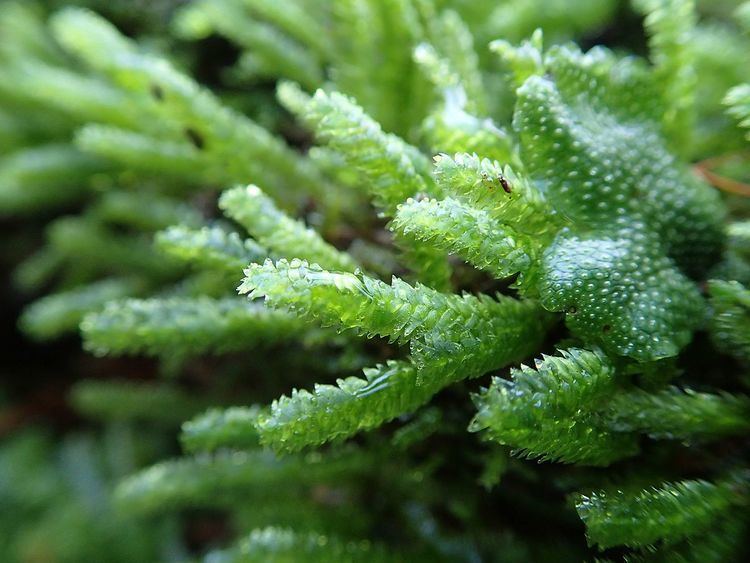 | ||
Bryology (from Greek bryon, a moss, a liverwort) is the branch of botany concerned with the scientific study of bryophytes (mosses, liverworts, and hornworts). Bryologists are people who have an active interest in observing, recording, classifying or researching bryophytes. The field is often studied along with lichenology due to the similar appearance and ecological niche of the two organisms, even though bryophytes and lichens are not classified in the same kingdom.
Contents
History
Bryophytes were first studied in detail in the 18th century. The German botanist Johann Jacob Dillenius (1687–1747) was a professor at Oxford and in 1717 produced the work "Reproduction of the ferns and mosses." The beginning of bryology really belongs to the work of Johannes Hedwig, who clarified the reproductive system of mosses (1792, Fundamentum historiae naturalist muscorum) and arranged a taxonomy.
Areas of research include bryophyte taxonomy, bryophytes as bioindicators, DNA sequencing, and the interdependency of bryophytes and other plant and animal species. Among other things, scientists have discovered parasitic bryophytes such as Cryptothallus and potentially carnivorous liverworts such as Colura zoophaga and Pleurozia.
Centers of research in bryology include University of Bonn, Germany, the University of Helsinki, Finland and the New York Botanical Garden.
